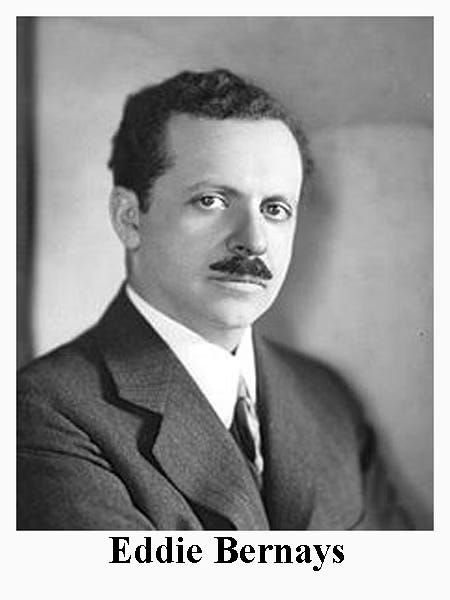Does the name, Edward Bernays ring a bell? Don’t bother searching for his handle on Instagram, his influencing started a long time ago. The 1920’s to be exact.
Cigarettes became popular in the US in the late 19th century. Previously the preferred methods of using tobacco were cigars, pipes, snuff and chewing. So why did cigarettes rise to fame? Many factors have to be taken into account. For instance, did you know that they were delivered to soldiers for free during the World Wars as a morale booster? Thanks for fighting, here’s some cancer! Machines were invented that allowed cigarettes to be made quickly and cheaply. Oh, and of course, we can’t forget the world class marketing campaign.
What do Bernays and cigarettes have to do with each other? One of Edward’s largest clients was George W. Hill, president of the American Tobacco Company. And Mr. Hill had a problem. You see, it was 1929, and lots of women were smoking cigarettes by then. However, they refused to smoke them outdoors, as this was typically associated with women of ill repute, if you know what I mean. This sordid reputation was unacceptably cutting into profits. So George Hill set up a meeting with Bernays, and demanded that he do something.
As the story goes, Hill said, ‘How can we get women to smoke on the street. They’re smoking indoors. But, damn it, if they spend half the time outdoors and we can get ’em to smoke outdoors, we’ll damn near double our female market. Do something. Act!’
And so Bernays got to work. It’s important to the story to understand who he was influenced by. He was born in Vienna to a Jewish family, and was the nephew of Sigmund Freud. After graduating with a degree in agriculture, here in America, he took a detour into a career in advertising. He wrote many books, where he described the masses as irrational and subject to herd instinct. Perhaps he knew us better than we knew ourselves. However, Bernays also outlined how skilled practitioners could use crowd psychology and psychoanalysis to control them in desired ways. These techniques and writings landed him positions with companies such as Proctor & Gamble, General Electric, and many others. His obituary named him, “the father of public relations.”
Back to cigarettes. How on Earth did he get women to smoke out of doors? He enlisted the aid of two crucial players. First psychiatrist A.A. Brill, a fellow student of Freud’s. Second, his secretary, Bertha Hunt. Brill told him that, ‘Cigarettes which are equated with men, become torches of freedom.’ This got the ball rolling. He needed this to be a feminist statement. Torches of Freedom. This event needed to happen somewhere public where it would make the papers. Enter, Bertha Hunt. She was to rally female friends for a march. Her telegram read, ‘In the interests of equality of the sexes and to fight another sex taboo I and other young women will light another torch of freedom by smoking cigarettes while strolling on Fifth Avenue Easter Sunday.’
On March 31st, 1929, ten young women, including Bertha Hunt, walked up and down Fifth Avenue, chain smoking. When a reporter from New York World asked Hunt why they were doing so, she replied, ‘she first got the idea for this campaign when a man with her in the street asked her to extinguish her cigaret [sic] as it embarrassed him. “I talked it over with my friends, and we decided it was high time something was done about the situation”.’
This was reported in many papers as simply the “Torches of Freedom” march, with no connection made back to the American Tobacco Company, or Bernays to be found.
Depending on who’s version you read, this campaign is said to have had little to no effect, while others say it was the beginning of a movement. It appears that by the numbers, it was the start of a huge rise in cigarette sales. Bernays continued the targeted campaign for eight more years, and promised women that not only would this make them equal, but by promising women that cigarettes would make them skinnier.
Even beyond the advertisements, the company paid for demonstrations on HOW to smoke. This story describes the “pretty registered nurse” who is touring the country to help empower women.
Now, of course, we know the truth. Cigarettes have been hugely detrimental to health, and of course, do not make women any more “equal” to men. This story is more than just a fun piece of pop culture history. I think, perhaps, losing these stories to history is the reason we continue to fall for propaganda. Bernays didn’t try to hide the ball saying, “Age old customs, I learned, could be broken down by a dramatic appeal.”
How can we be immune to dramatic appeal, if we don’t know what to look for? We can’t lose our grasp on what the generations before us have unknowingly taught us.







